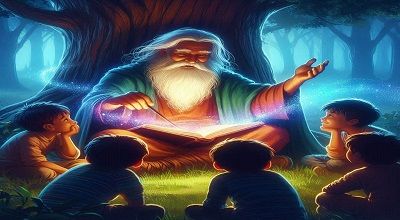Teaching Content Or Teaching Thought
Teaching Thought: That is a very interesting question. It seems that you are curious about the different approaches to education and how they affect student learning. There are two main ways of teaching: content-centric and thinking-centric¹². Content-centric teaching focuses on delivering facts, theories, and information to students, while thinking-centric teaching prioritizes cognitive skills, problem-solving, and critical thinking.
Both approaches have their advantages and disadvantages, and the best way to teach may depend on the subject, the context, and the goals of the learners. Ideally, education should find a balance between content and thinking, so that students can acquire both knowledge and skills that are relevant and applicable in the real world.
Some educators suggest that good teachers teach content in ways that promote thinking, while great teachers teach thinking in ways that promote content. This means that great teachers help students think independently, creatively, and critically about the concepts and ideas they encounter, rather than just memorizing and repeating them.
So, to answer your question, I think that teaching content and teaching thought are not mutually exclusive, but rather complementary. The best teachers are those who can integrate both content and thought in their teaching, and inspire students to become lifelong learners.
How Do You Know If You Are Teaching Content?
There are different ways to check if you are teaching content effectively. One way is to use formative assessments, such as quizzes, exit tickets, or self-assessments, to measure students’ understanding of the content and identify any gaps or misconceptions. Another way is to use creative tasks, such as projects, presentations, or portfolios, to allow students to demonstrate their mastery of the content and apply it in authentic contexts. A third way is to use reflective practices, such as journals, feedback, or peer review, to encourage students to think about their own learning process and how they can improve it.
Ultimately, teaching content is not just about delivering information, but also about helping students to think deeply, critically, and creatively about it. Therefore, you can know if you are teaching content by observing how your students engage with the content, how they use it to solve problems, and how they connect it to their own experiences and interests.
What are some examples of content?
Some examples of content in education are:
- English (or English language arts): This content area covers reading, writing, speaking, listening, and language skills. It also includes literature, grammar, vocabulary, and composition.
- Mathematics: This content area covers numbers, operations, algebra, geometry, statistics, and calculus. It also includes problem-solving, reasoning, and modeling.
- Science: This content area covers physical, life, earth, and space sciences. It also includes scientific inquiry, investigation, and experimentation.
- Social studies (or history and civics): This content area covers history, geography, economics, government, and citizenship. It also includes culture, diversity, and global awareness.
Final Words
These are some of the most common content areas in public schools, but there are also other content areas, such as art, music, physical education, health, and foreign languages. Content areas are one method that schools use to organize knowledge, teaching, and academic programming. They help students learn about different subjects and develop various skills and competencies.
